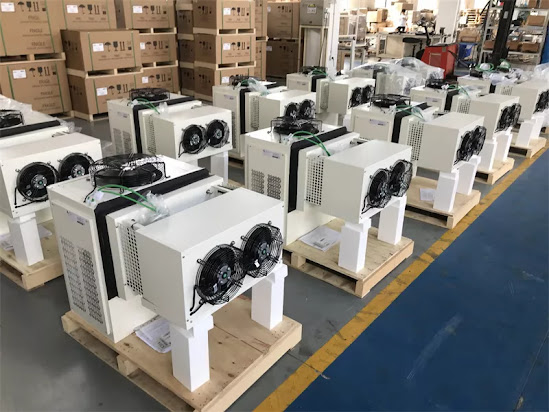Cold Room Refrigeration Units are critical for industries such as food storage, pharmaceuticals, floriculture, and logistics. These units ensure that perishable products remain fresh and within safe temperature ranges. However, to maintain efficiency and prolong the life of these systems, regular optimization is essential. This article outlines the key steps to optimize the performance of Cold Room Refrigeration Units.
1. Regular Maintenance and Inspection
Routine checks and maintenance are the cornerstone of high-performing Cold Room Refrigeration Units. Regularly inspect compressors, evaporators, condensers, fans, and thermostats to ensure they are operating efficiently. Dirty or damaged components can hinder performance and increase energy consumption.
Key Tasks:
-
Clean filters, coils, and fans
-
Inspect electrical connections
-
Check for refrigerant leaks
-
Lubricate moving parts
2. Ensure Proper Insulation
Insulation plays a vital role in the efficiency of Cold Room Refrigeration Units. Poor insulation leads to increased heat infiltration, making the refrigeration system work harder to maintain the desired temperature.
Optimization Tips:
-
Use high-quality insulation materials
-
Seal any gaps or leaks in doors and walls
-
Regularly inspect insulation panels for wear or damage
3. Optimize Temperature Settings
Overcooling wastes energy and increases operational costs. Cold Room Refrigeration Units should be set to the ideal temperature range required for the specific products being stored.
Recommended Actions:
-
Use programmable digital thermostats
-
Monitor temperature fluctuations with data loggers
-
Adjust settings based on season or storage load
4. Install Energy-Efficient Components
Modern Cold Room Refrigeration Units come with energy-efficient compressors, variable speed drives, and advanced control systems. Retrofitting older units with these components can drastically improve performance.
Upgrade Suggestions:
-
Inverter-based compressors
-
LED lighting
-
Smart controllers and sensors
-
High-efficiency fan motors
5. Implement Proper Airflow Management
Efficient airflow ensures uniform cooling throughout the cold room. Blocked vents or improper stacking of products can lead to hotspots and uneven cooling.
Best Practices:
-
Avoid overloading the space
-
Leave space between walls and products
-
Keep air vents unobstructed
-
Use perforated shelving when possible
6. Monitor Humidity Levels
Maintaining the correct humidity level is crucial for preserving product quality and reducing the load on Cold Room Refrigeration Units.
Humidity Control Tips:
-
Install humidifiers or dehumidifiers as needed
-
Use moisture-resistant flooring
-
Keep door openings to a minimum
7. Train Staff and Operators
Human error is a common reason for inefficiencies in cold room operations. Proper training ensures that staff understand how to manage and use Cold Room Refrigeration Units efficiently.
Training Focus:
-
Importance of door discipline (keeping doors closed)
-
Reporting unusual noises or temperature fluctuations
-
Understanding alarm systems
8. Use Remote Monitoring Systems
Modern Cold Room Refrigeration Units can be equipped with IoT-enabled sensors and cloud-based monitoring systems. These tools help track performance, detect anomalies, and allow remote control.
Benefits:
-
Real-time alerts for temperature deviations
-
Predictive maintenance notifications
-
Performance analytics and reports
9. Perform Seasonal Checks
Cold Room Refrigeration Units may require different settings or maintenance approaches depending on the season. For example, condensers may get clogged more frequently in dusty summer months.
Seasonal Maintenance Includes:
-
Cleaning condenser coils
-
Checking refrigerant pressure
-
Adjusting thermostat calibration
10. Consider a Professional Audit
Sometimes, the best way to identify inefficiencies is to have a professional energy audit of your Cold Room Refrigeration Units. Experts can offer tailored suggestions to improve performance and reduce operational costs.
Conclusion
Optimizing Cold Room Refrigeration Units is not just about energy savings—it directly impacts product quality, safety, and business profitability. From regular maintenance to adopting modern technology, each step plays a vital role in enhancing performance. By following the strategies outlined above, businesses can ensure their refrigeration systems run efficiently and reliably, year-round.

Comments
Post a Comment